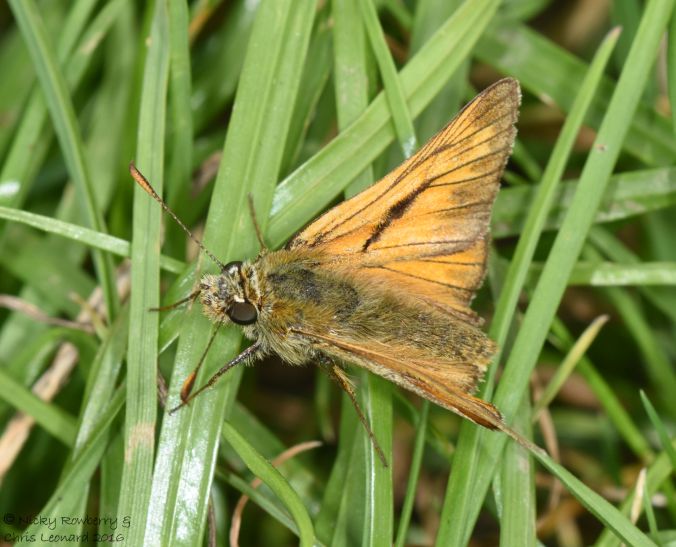As we were still technically on our holiday that never happened/staycation at the weekend, we decided to head out again for another butterfly day. Not a new species this time, but back down to Daneway Banks in Gloucestershire to see the Large Blues that we had only seen once before.
As we entered the reserve, the air was positively buzzing with the sound of grasshoppers. I think they were Meadow Grasshoppers and they were everywhere, pinging away from us as we walked across the grass.
The commonest butterflies by far were the Marbled Whites and Meadow Browns.
The Marbled Whites in particular were very fresh looking and quite stunning in the sunshine.
We even managed to find a mating pair; the female is the one at the top with the browner looking markings on the underwings.
It was a bit cloudy when we first arrived, so the Large Blues weren’t flying much, but as the sun started to come out we spotted a couple. On our previous visit we had only managed to get photos of a mating pair of Large Blues – most unusual for that to be our only shots, but it meant they had their wings closed. So this time we were keen to get one with its wings open. Fortunately the first one was fairly relaxed and let us take a few photos.
A very helpful reserve warden then pointed us in the direction of a “hot spot” for them, further into the reserve. This coincided with the sun really coming out, which made them much flightier. So although we probably saw about 10 more, we couldn’t get as close again to get better photos.
The final individual we saw was another raggedy one, who was perhaps to worn out to be bothered flying off, so allowed us a photo of the underside of what was left of his wings.
We’d seen a few skippers about during the day, but they are so fast it is often hard to tell which species until we can download the photos. Turns out these ones were Small Skippers, our first of the year.
The final butterfly species appeared just as we were leaving the reserve – a Small Heath, again the first of these we’d seen this year.
Once again I failed to get decent shots of a couple of birds. This woodpecker sat on a fence post for ages as I crept closer trying to get a photo, then of course just as I was getting within reasonable focal distance he flew off.
Most unusually a swallow landed on the ground only a few metres away from me. I was so surprised that I didn’t react quick enough to get a photo of it on the ground, only this blurry one as it took off again. I’d always thought they stayed on the wing almost permanently apart from egg time, but clearly this one had other ideas.
As we were about to leave the same helpful warden suggested that we might want to nip across the road on our way back to the car and have a quick look in Siccaridge Wood. It is an ancient coppiced woodland and there was apparently a Greater Butterfly-Orchid just 30 yards in. Never having heard of this, let alone seen one, it seemed worth a small detour. Sure enough, exactly as described was the tallest British orchid we’ve ever seen; it must have been at least 50cm tall. With hindsight I should have got Chris to take a photo of me next to it for scale (I stand a majestic 1.5m tall).
I can’t say the flowers looked particularly butterfly like to us, but it was certainly an impressive plant.
On our previous trip to Daneway we had finished up at the very nice Daneway Inn, but sadly of course that wasn’t possible this time. Daneway Banks is a fantastic site and a real success story for the Large Blue butterfly, which had gone extinct in the UK before the heroic efforts to bring it back. The perfect way to round off our non-holiday.






















































